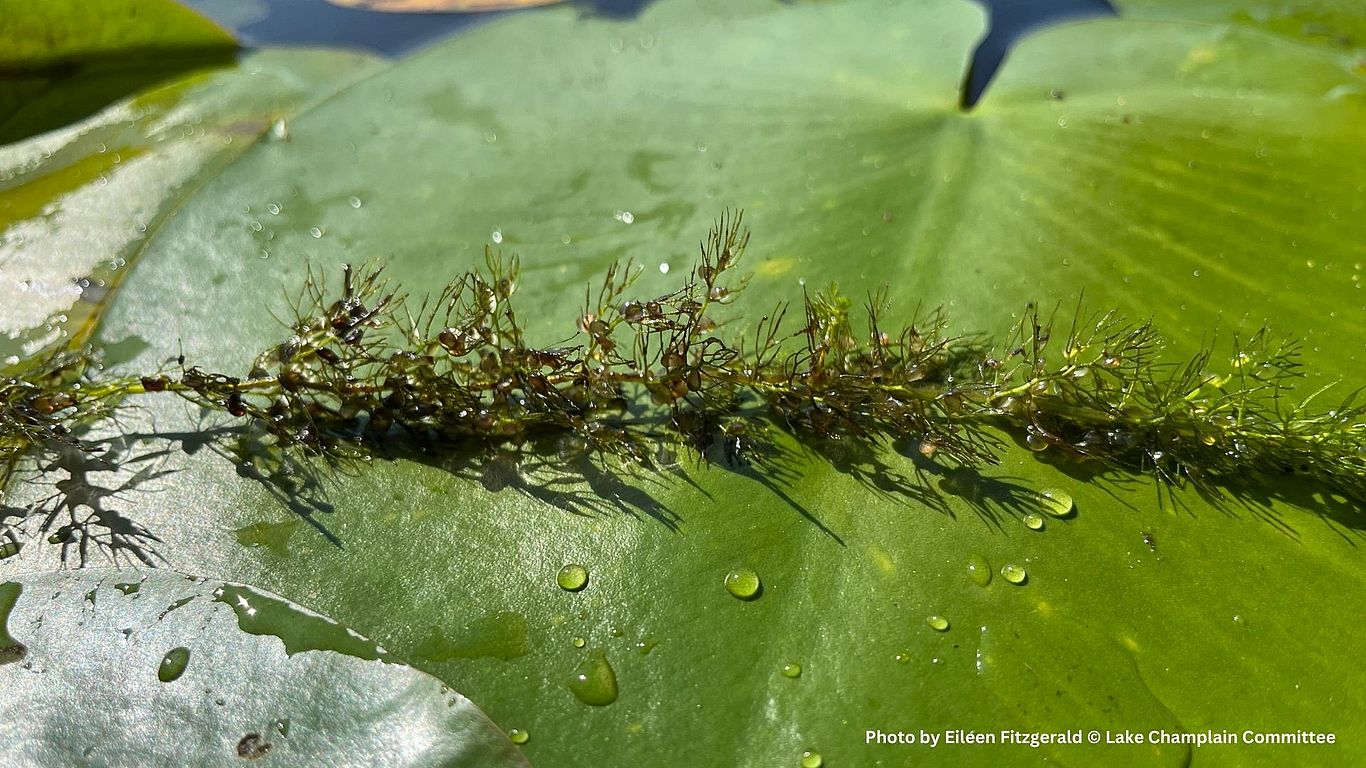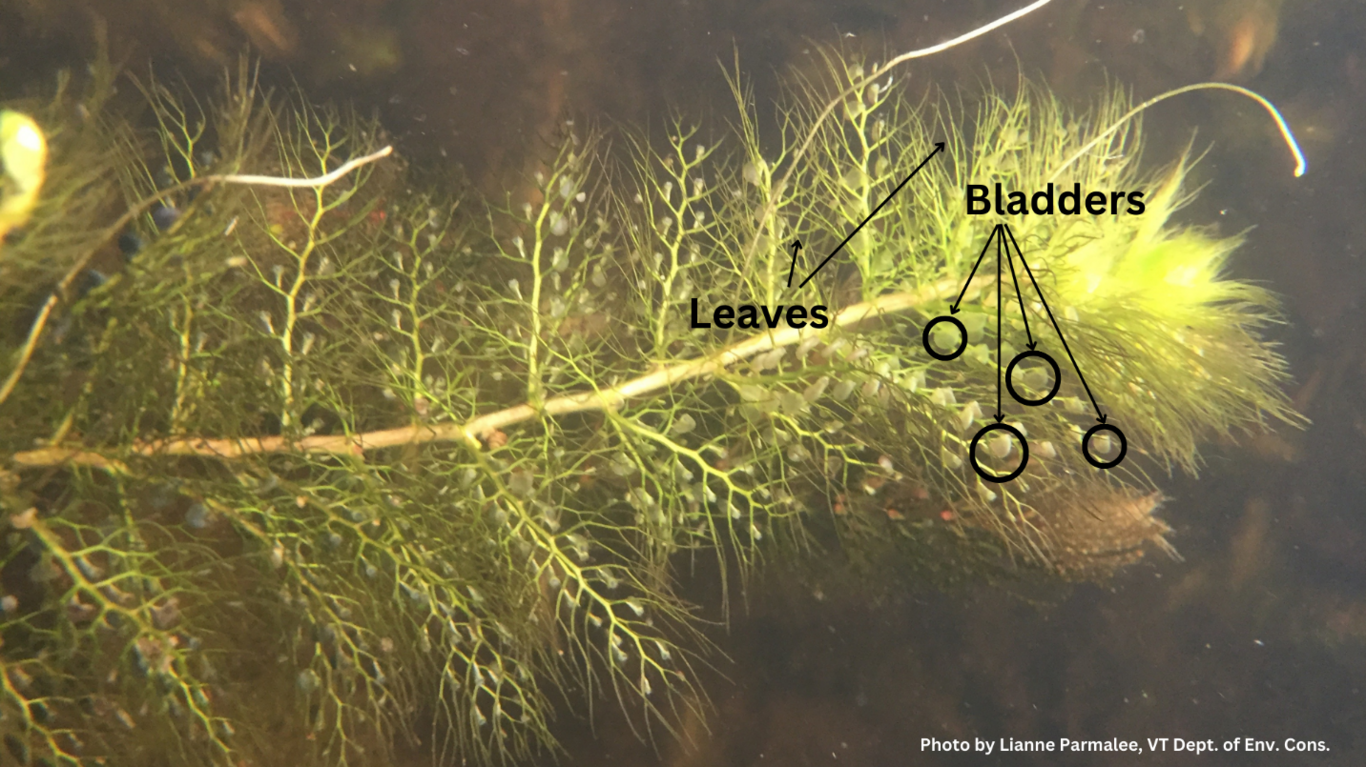Nature Note: Bladderwort: the Fastest Predator in Lake Champlain
Nature Note
Bladderwort: the Fastest Predator in Lake Champlain

In the shallow shores of Lake Champlain, a predator who engulfs its prey in milliseconds floats just below the surface, waiting for the next unlucky victim. It is neither freshwater shark nor sinister cryptid cousin to Champ, but actually a seemingly innocuous, yet carnivorous native plant: the bladderwort.
Bladderworts are widely distributed—there are multiple species in the utricularia genus, and Common Bladderwort (Utricularia macrorhiza) is found in all 50 states and makes its home in Lake Champlain. It appears non-descript: it is a free-floating aquatic plant, with each individual consisting of a stem that grows about eight inches long covered in thin, alternating leaves roughly one inch in length. The word “utricularia” is Latin for “little bag”, which refers to the bladders that make bladderwort distinct: the plant’s leaves are interspersed with tiny sacs that trap and digest prey.
The bladder trap, when "set", is under negative pressure in relation to its environment. The trap opens when hapless prey such as insect larvae or other minute aquatic organisms bump against the fine microscopic hairs around the bladder. This mechanically triggers the bladder to open and suck in water and whatever is floating in it.

Once the bladder is full of water, the trap closes. The whole process from trigger to re-sealing the bladder takes about 10 milliseconds--100 times faster than a Venus flytrap--and water is sucked in at a remarkable force of 600 g (or 600 times the force of gravity). According to the Guinness Book of World Records, this makes the bladderwort the fastest plant in the world! Advances in microscopy and high-speed cameras have allowed researchers to study this surprisingly sophisticated trap system more closely. Recent findings suggest that bladderworts may form symbiotic relationships with microorganisms around their bladders, possibly to help attract prey and assist with digestion (much like our own gut flora!).
Bladderwort have a pretty flower for something so vicious—yellow petals form a small orchid-like structure and poke out from the water and bloom in Lake Champlain in July and August. While the blooms are now mostly gone in summer’s wane, the speedy plant is still under the surface, eating insect larvae and other invertebrates. As we move into fall, the plants will die back and then lie dormant on the lakebed until spring, when they rise and awaken for more quick meals. Bladderworts help show that plants are active participants in their ecosystems, and not just stagnant food sources for more charismatic animals. Let’s count ourselves lucky to be too large for their consumption!